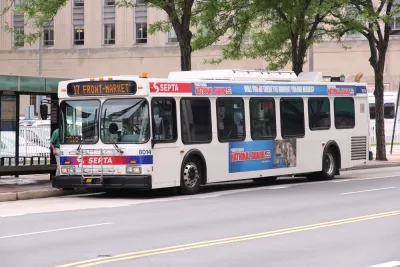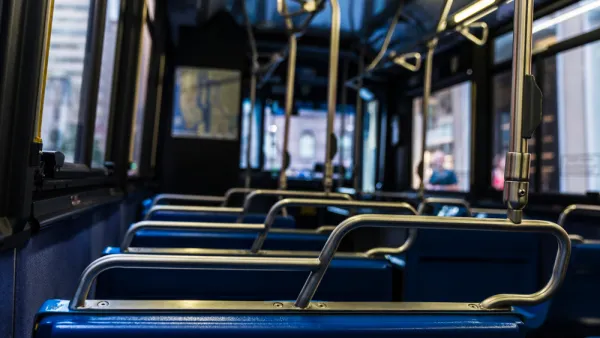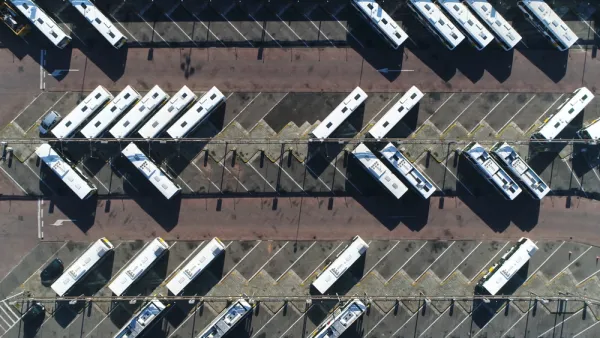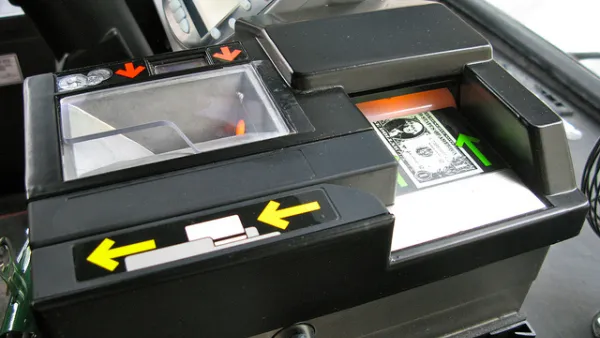As rainy day funds and federal aid dwindle, transit agencies formerly reliant on farebox revenue are exploring new ways to fund their operations.

Transit agencies in some of the biggest U.S. cities “are facing a fiscal cliff,” according to one in a series of Governing articles that outline the prospects of transit agencies around the country.
As Jake Blumgart writes, “It is worth noting that the vast majority of American transit systems do not rely on fares for much of their budget. Their ridership is overwhelmingly comprised of lower-income passengers, who have not had the luxury of remote work during the pandemic.” But for agencies in big cities where remote work made a big impact on ridership and revenue, the drastic change in how people use transit could mean an existential crisis.
The article describes an analysis by TransitCenter of transit systems in New York, Philadelphia, and Chicago. New York’s Metropolitan Transportation Authority (MTA) doesn’t face a budget shortfall until 2025, in part thanks to its “expansive” ability to borrow money. But to maintain the system long-term, the agency needs new sources of funding, such as the city’s congestion pricing program. Philadelphia’s Southeastern Pennsylvania Transportation Authority (SEPTA), meanwhile, is cushioned by a rainy day fund that the state requires transit agencies to maintain. In Chicago, the Regional Transportation Authority (RTA) is relying on the generous amount of federal aid it received, as well as a local sales tax on online sales that contributes to the agency’s revenue.
All three agencies, however, expect to face budget shortfalls by the end of 2025.
FULL STORY: For Mass Transit Agencies, a Fiscal Cliff Looms (Part II)

Analysis: Cybertruck Fatality Rate Far Exceeds That of Ford Pinto
The Tesla Cybertruck was recalled seven times last year.

National Parks Layoffs Will Cause Communities to Lose Billions
Thousands of essential park workers were laid off this week, just before the busy spring break season.

Retro-silient?: America’s First “Eco-burb,” The Woodlands Turns 50
A master-planned community north of Houston offers lessons on green infrastructure and resilient design, but falls short of its founder’s lofty affordability and walkability goals.

Test News Post 1
This is a summary

Analysis: Cybertruck Fatality Rate Far Exceeds That of Ford Pinto
The Tesla Cybertruck was recalled seven times last year.

Test News Headline 46
Test for the image on the front page.
Urban Design for Planners 1: Software Tools
This six-course series explores essential urban design concepts using open source software and equips planners with the tools they need to participate fully in the urban design process.
Planning for Universal Design
Learn the tools for implementing Universal Design in planning regulations.
EMC Planning Group, Inc.
Planetizen
Planetizen
Mpact (formerly Rail~Volution)
Great Falls Development Authority, Inc.
HUDs Office of Policy Development and Research
NYU Wagner Graduate School of Public Service




























